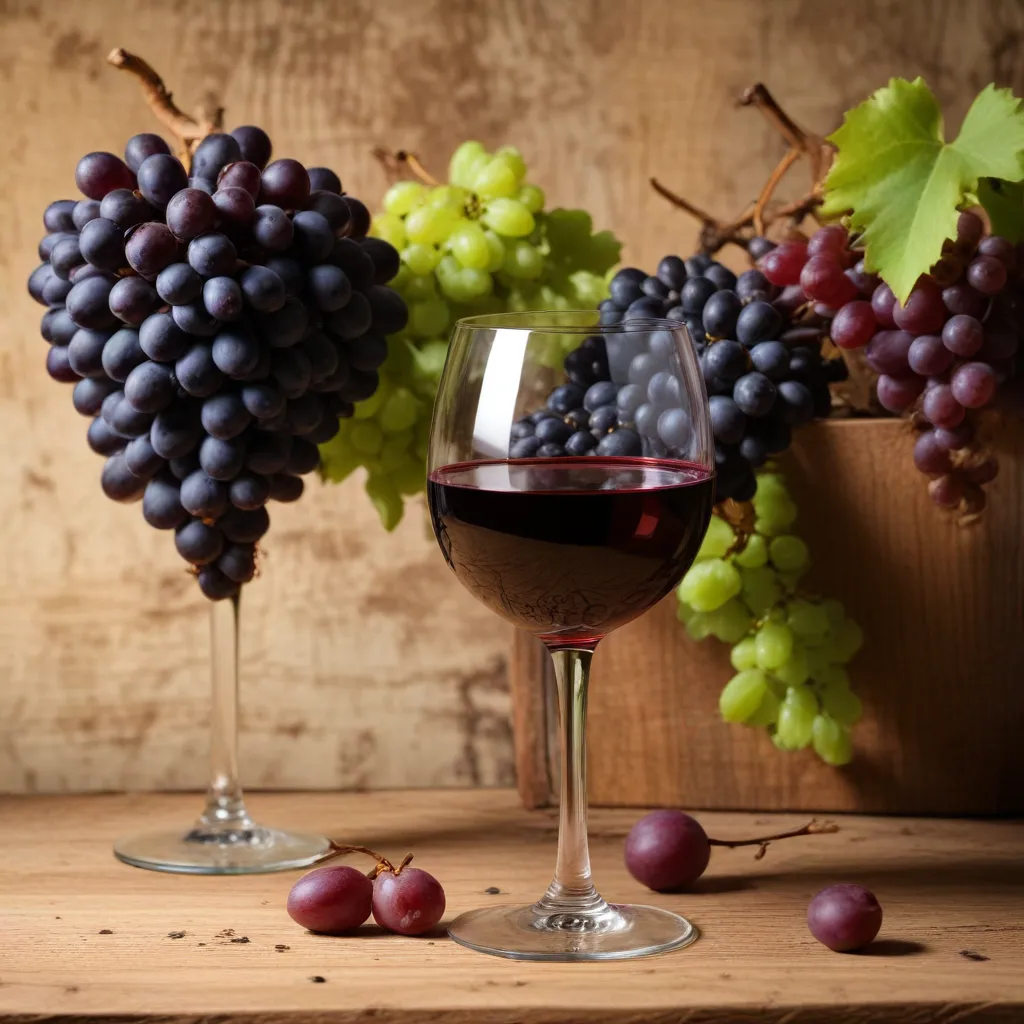
At the Wine Garden Inn, we take great pride in showcasing the dynamic interplay between our estate-grown produce and the exceptional vintage variations that grace each bottle of our vintages. Beyond the vibrant flavors and aromas that captivate our guests, the antioxidant properties of our wines play a crucial role in promoting overall health and wellness. Join us as we delve into the fascinating world of phenolic compounds, tannins, and flavonoids – the unsung heroes that lend our wines their remarkable depth and complexity.
The Science of Wine Antioxidants
Grape Chemistry
At the heart of every bottle of wine lies the humble grape – a veritable treasure trove of phenolic compounds, the diverse array of organic molecules that contribute to a wine’s color, structure, and health-promoting benefits. These compounds, which include tannins and flavonoids, are synthesized within the grape berry as a natural defense mechanism against environmental stresses, such as UV radiation and pathogen attack.
The intricate interplay between a grape’s genetics, the terroir in which it is grown, and the winemaking techniques employed all play a pivotal role in determining the final phenolic profile of the wine. This dynamic relationship is the key to understanding the captivating variations we witness from vintage to vintage.
Vintage Variation
While winemakers strive to maintain a consistent house style, the unique chemistry of each year’s grape harvest ensures that no two vintages are ever quite the same. Environmental factors, such as weather patterns, soil composition, and disease pressure, can significantly impact the accumulation of phenolic compounds within the grape berries.
Additionally, the specific winemaking techniques used, from fermentation and oak barrel aging to the final bottling process, can further influence the evolution of these precious antioxidants. As the wine matures in the bottle, additional transformations occur, with certain phenolics polymerizing or oxidizing to create novel flavor and aroma profiles.
Antioxidant Properties of Wine
Oxidative Stress in the Body
Antioxidants play a crucial role in human health by neutralizing the harmful effects of free radicals – highly reactive molecules that can damage cellular components and contribute to the development of various chronic diseases, including cardiovascular issues, cognitive decline, and even certain cancers.
Through a complex series of chemical reactions, the phenolic compounds found in wine are able to scavenge these free radicals, preventing them from wreaking havoc on our bodies. Additionally, these antioxidants possess anti-inflammatory properties, helping to reduce the cellular damage associated with chronic inflammation.
Health Benefits of Wine Antioxidants
Numerous studies have highlighted the potential health benefits of moderate wine consumption, with the antioxidant content of the beverage playing a central role. Regular and moderate intake of wine has been linked to improved cardiovascular health, enhanced cognitive function, and a reduced risk of certain types of cancer.
The unique phenolic profile of each wine vintage, shaped by the interplay of terroir and winemaking techniques, may offer slightly different health benefits. For example, certain flavonoids found in red wines have been shown to have a more potent effect on cholesterol levels than their white wine counterparts.
The Winemaking Process
Grape Cultivation
The journey towards a bottle of exceptional wine begins long before the grapes are harvested. The cultivation of our estate-grown produce is a delicate balance of art and science, with our viticulturists carefully managing factors such as soil acidity, microclimate, and canopy management to ensure the optimal development of phenolic compounds.
Through meticulous attention to detail and a deep understanding of the unique terroir of our vineyards, we are able to coax out the full potential of each grape variety, creating a diverse array of wines that showcase the richness and complexity of our region.
Fermentation and Aging
Once the grapes have been harvested at the perfect moment of ripeness, the winemaking process truly begins. During fermentation, the yeast metabolism not only converts the grape sugars into alcohol but also influences the extraction and transformation of phenolic compounds.
The judicious use of oak barrel aging further enhances the wine’s antioxidant profile, with the interaction between the wine and the wood imparting additional layers of flavor and structure. As the wine matures in the bottle, bottle maturation continues to shape the phenolic compounds, leading to the development of those sought-after tertiary aromas and flavors.
Analyzing Vintage Variation
Analytical Techniques
To better understand the nuances of vintage variation, our winemaking team employs a range of analytical techniques, including high-performance liquid chromatography (HPLC), mass spectrometry, and spectrophotometry. These advanced tools allow us to precisely quantify and identify the diverse array of phenolic compounds present in each wine, providing valuable insights into the factors that shape their antioxidant profiles.
Factors Affecting Antioxidant Levels
From the choice of grape variety to the precise timing of the harvest and the multitude of decisions made during the winemaking process, a myriad of factors can influence the final antioxidant content of the wine. By carefully monitoring these variables and analyzing the resulting data, we are able to fine-tune our practices, ensuring that each vintage exceeds the expectations of our discerning guests.
Whether you’re savoring the vibrant freshness of a young white wine or the profound complexity of a well-aged red, the antioxidant-rich bounty of our estate-grown produce is sure to delight your senses and nourish your body. Join us on this journey of discovery as we continue to unravel the mysteries of vintage variation at the Wine Garden Inn.
